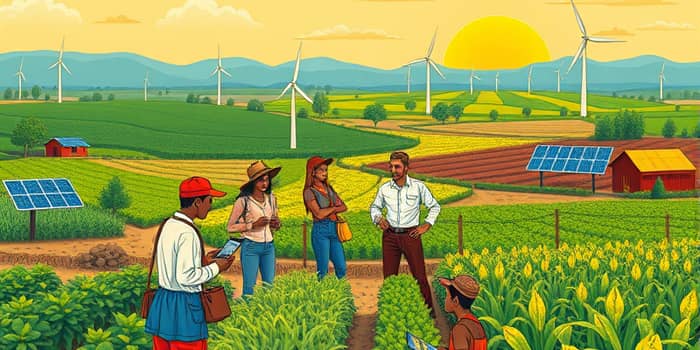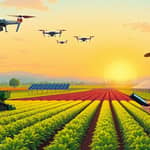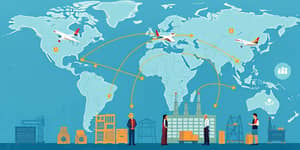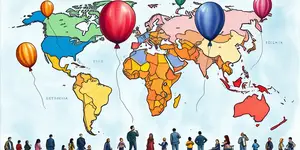
In an era defined by interwoven crises, the stability of our global food systems stands at a critical crossroads. As of 2025, roughly 295.3 million people across 53 countries face acute food insecurity, while 733 million individuals endure daily hunger despite sufficient global production. This disparity underscores the urgent need for coordinated policy innovation and practical interventions to ensure that every person has reliable access to nutritious food.
A detailed review of the 2025 Global Report on Food Crises reveals that hunger hotspots persist most severely in sub-Saharan Africa, South Asia, Sudan, Gaza, and regions of East and West Africa. In these areas, conflict disrupts supply chains, economic volatility undermines livelihoods, and forced displacement intensifies demand on fragile systems.
Although food production can theoretically feed eight billion people, inequalities in distribution, storage losses, and market failures leave millions undernourished. Acute hunger metrics highlight gaps not only in availability, but also in resilience and local capacity to adapt to shocks.
Multiple interlocking factors propel the rise in food insecurity. Conflict remains the most immediate driver, reducing access to fields and marketplaces, destroying crops, and displacing farming communities. Economic shocks—such as currency collapses and commodity price spikes—erode purchasing power among the poorest populations.
Meanwhile, climate variability and extreme events such as droughts and floods have intensified in both frequency and severity. These disasters not only reduce crop yields but also strip soils, damage infrastructure, and limit long-term productivity. Recent pandemics and market disruptions have exposed vulnerabilities in global supply chains, while inflationary pressures constrain governments’ abilities to subsidize essential staples.
The cumulative effect is that communities with limited coping mechanisms are repeatedly pushed beyond their capacity to recover, deepening cycles of poverty and increasing dependency on aid.
Faced with declining humanitarian allocations—projected to drop by up to 45% in food sector funding in crisis countries—international organizations and governments are pivoting toward more sustainable policy solutions. The emphasis has shifted from emergency relief to multisectoral development interventions that foster long-term resilience and food system sustainability.
Institutions including the World Bank, FAO, WFP, IFPRI, and WTO are harmonizing efforts through platforms like the Global Alliance for Food Security, creating cross-border frameworks that foster rapid resource mobilization and knowledge sharing. By bridging humanitarian and development agendas, these alliances deliver a dual benefit: mitigating immediate hunger while building systemic resilience to future shocks.
Investing in local value chains and small-scale processors can create jobs, reduce post-harvest losses, and stimulate rural economies. However, these interventions necessitate policy instruments that balance regulatory oversight with market incentives, ensuring that safety standards do not become barriers to entry for micro-entrepreneurs.
Several flagship initiatives demonstrate how targeted investment and policy coherence can yield tangible benefits for farmers and consumers. Two notable programs stand out:
The AICCRA project has empowered communities with climate-smart agricultural solutions and advisory networks, boosting both productivity and incomes. Simultaneously, the West Africa Food Systems Resilience Program combines digital services, market integration, and crisis management capacity-building to reinforce regional preparedness.
Designing effective policies requires navigating complex trade-offs among sustainability, food safety, nutritional outcomes, and economic efficiency. Scaling high-yield crop varieties might increase output but can raise concerns about biodiversity loss and market concentration. Similarly, subsidizing staple grains can enhance affordability but may risk undermining dietary diversity.
Policymakers must also ensure that interventions remain inclusive, addressing the specific needs of vulnerable populations such as women farmers, pastoralists, and displaced communities. Evidence-based assessments and transparent stakeholder engagement are essential to avoid unintended consequences, as seen in past food safety incidents that disproportionately affected marginalized groups.
The convergence of digital technology and agricultural research is unlocking new pathways to resilience. Mobile-based advisory platforms deliver hyper-local weather forecasts and pest alerts to remote growers, while blockchain systems enhance supply chain transparency, reducing spoilage and fraud. The One Health framework further integrates human, animal, and environmental health considerations, recognizing that food safety and ecosystem integrity are inseparable.
Regional trade agreements, coupled with targeted infrastructure investments in roads, storage facilities, and processing centers, can alleviate market bottlenecks and improve access to nutritious foods. Novel financing models like blended grants and risk-sharing mechanisms are also attracting private capital into rural food systems, amplifying the impact of public funds.
The magnitude of global hunger demands more than isolated initiatives—it calls for a tapestry of collaboration that spans governments, NGOs, research institutions, the private sector, and local communities. By aligning policies with the best available evidence and fostering inclusive, multisectoral partnerships, we can forge resilient food systems capable of withstanding shocks and nourishing future generations.
Time is of the essence. With each declining harvest and rising price tag, the ultimate cost of inaction grows steeper. Through shared commitment and innovative policy frameworks, the world can transform a moment of crisis into a catalyst for lasting change, ensuring that no one is left behind in the quest for food security.
Empowering farmers and policymakers together offers the most promising path toward a future where hunger is not an inevitability but a challenge we have collectively overcome.
References













